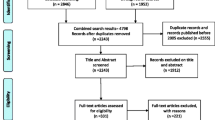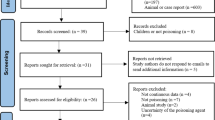Abstract
Background
Acceptance of organs from acute chemical intoxicated donors remains controversial and outcomes are insufficiently explored.
Methods
This is a single-center retrospective cohort analysis of 484 patients undergoing deceased donor kidney transplantation (DDKT). We assessed the association of positive urine drug screen before transplantation with cohort statistics, delayed graft function (DGF), and graft outcomes at 2 years. Multiple logistical regression (MLR) analysis was used to assess the odds ratio for DGF.
Results
Of 484 random DDKTs performed at our institution between January 2010 and October 2015, 280 deceased kidney donors were current drug users. Mean age was 35.4 (15) years, 39% male, 61% were African Americans, and 38.2% had more than one test positive. The main chemical toxins detectable in donor urine were alcohol, heroin, opioid/methadone, cocaine, marijuana, benzodiazepines, methamphetamine, ecstasy, and LSD. Single and multiple urine chemical toxicology of kidney donors did not have a significant effect on KT outcomes of DGF and graft failure during a median follow-up (P for odds ratios > 0.05).
Conclusions
The use of deceased donor kidney grafts from donors with positive urine chemical toxicology may be a worthwhile method of increasing the availability of scarce donor kidney organs as such exposure to illicit drug(s) is not associated with major adverse transplant outcomes.


Similar content being viewed by others
References
Matas AJ, Smith JM, Skeans MA et al (2014) OPTN/SRTR 2012 annual data report: kidney. Am J Transpl 14(Suppl 1):11–44
Durand CM, Bowring MG, Thomas AG et al (2018) The drug overdose epidemic and deceased-donor transplantation in the United States: a national registry study. Ann Intern Med 168(10):702–711
Vaduganathan M, Machado SR, DeFilippis EM et al (2019) Organ donation and drug intoxication-related deaths in the United States. N Engl J Med 380(6):597–599
Chute DF, Sise ME (2018) Effect of the opioid crisis on the donor pool for kidney transplantation: an analysis of national kidney deceased donor trends from 2010–2016. Am J Nephrol 47(2):84–93
Chan YH (2003) Biostatistics 102: quantitative data–parametric & non-parametric tests. Singapore Med J 44(8):391–396
Chan YH (2003) Biostatistics 103: qualitative data—tests of independence. Singapore Med J 44(10):498–503
Wood DM, Dargan PI, Jones AL (2003) Poisoned patients as potential organ donors: postal survey of transplant centres and intensive care units. Crit Care (Lond Engl) 7(2):147–154
Wood DM, Chan WL, Dargan PI (2014) Using drug-intoxicated deaths as potential organ donors: impression of attendees at the American college of medical toxicology 2014 annual scientific meeting. J Toxicol 10(4):360–363
Cho YW, Terasaki PI, Cecka JM. New variables reported to the UNOS registry and their impact on cadaveric renal transplant outcomes—a preliminary study. Clin Transpl 1995:405–415.
Cho YW. Expanded criteria donors. Clin Transpl 1998:421–436.
Leikin JB, Heyn-Lamb R, Aks S, Erickson T, Snyder J (1994) The toxic patient as a potential organ donor. Am J Emerg Med 12(2):151–154
Tenore PL (2010) Advanced urine toxicology testing. J Addict Dis 29(4):436–448
Koerner MM, Tenderich G, Minami K et al (1997) Extended donor criteria: use of cardiac allografts after carbon monoxide poisoning. Transplantation 63(9):1358–1360
Hebert MJ, Boucher A, Beaucage G, Girard R, Dandavino R (1992) Transplantation of kidneys from a donor with carbon monoxide poisoning. N Engl J Med 326(23):1571
Bentley MJ, Mullen JC, Lopushinsky SR, Modry DL (2001) Successful cardiac transplantation with methanol or carbon monoxide-poisoned donors. Ann Thorac Surg 71(4):1194–1197
Lopez-Navidad A, Caballero F, Gonzalez-Segura C, Cabrer C, Frutos MA (2002) Short- and long-term success of organs transplanted from acute methanol poisoned donors. Clin Transplant 16(3):151–162
Mojtabaee M, Shahryari S, Nikeghbalian S, Shadnia S, Sadegh BF (2017) Liver procurement from poisoned donors, a survival study. Transplantation 101:S91–S92
Mistry U, Dargan PI, Wood DM (2018) Pesticide-poisoned patients: can they be used as potential organ donors? J Med Toxicol 14(4):278–282
Rodrigus IE, Conraads V, Amsel BJ, Moulijn AC (2001) Primary cardiac allograft failure after donor carbon monoxide poisoning treated with biventricular assist device. J Heart Lung Transpl 20(12):1345–1348
Hantson P, Mahieu P, Hassoun A, Otte JB (1995) Outcome following organ removal from poisoned donors in brain death status: a report of 12 cases and review of the literature. J Toxicol Clin Toxicol 33(6):709–712
Luckraz H, Tsui SS, Parameshwar J, Wallwork J, Large SR (2001) Improved outcome with organs from carbon monoxide poisoned donors for intrathoracic transplantation. Ann Thorac Surg 72(3):709–713
Acknowledgements
This material has not been published previously, in whole or part, and is not under consideration for publication elsewhere*. This paper has no tables or figures that would require permission to reprint. The authors have no conflict of interest to declare. All authors had participated in the preparation of this manuscript, fulfilled criteria for authorship and have approved the paper in the current format (*parts of study was presented in a poster format at the American Society of Nephrology 2017 Kidney Week Meeting, Oct 31- Nov 05, New Orleans, LA. J Am Soc Nephrol. 2017;28:676A).
Funding
This study was not supported by any grant.
Author information
Authors and Affiliations
Contributions
KS: clinical relevance, initial draft of paper, and literature review. CM: chart review, manuscript revision, clinical relevance, and literature review. TN: manuscript revision, clinical relevance, and literature review. TF: manuscript revision, clinical relevance, and literature review. EK: manuscript revision, clinical relevance, and literature review. BAM: chart review, clinical relevance, manuscript development, coordinating manuscript revisions, literature review, correspondence, and senior author.
Corresponding author
Additional information
Publisher's Note
Springer Nature remains neutral with regard to jurisdictional claims in published maps and institutional affiliations.
Rights and permissions
About this article
Cite this article
Soliman, K.M., Molini, C., Novick, T. et al. The impact of donor urine chemical toxicology analysis on outcomes of kidney transplantation. Int Urol Nephrol 52, 1173–1178 (2020). https://doi.org/10.1007/s11255-020-02450-w
Received:
Accepted:
Published:
Issue Date:
DOI: https://doi.org/10.1007/s11255-020-02450-w




